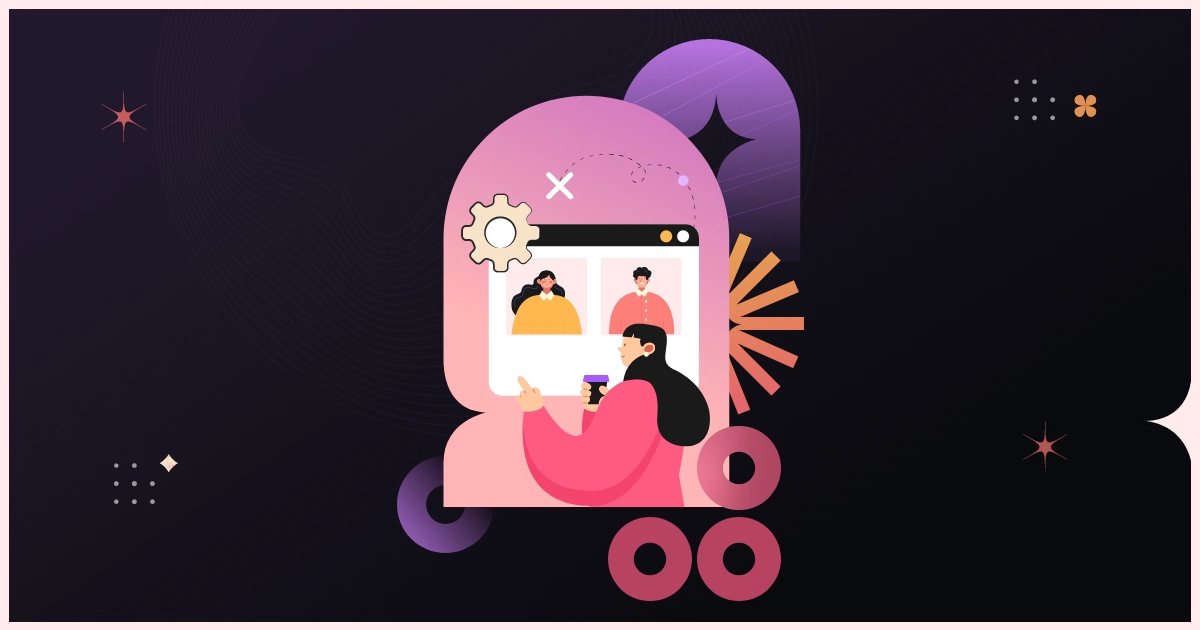Are you tired of sifting through countless resumes and struggling to find the perfect fit for your organization? Recent statistics from the Talent Climate research initiative report indicate that it now takes an average of 44 days to appoint people, up from 43 a year ago, rising by a full day in Q1 2023. This is a concerning rise in the time required for employers to fill open positions. It’s a challenge that many companies are expected to continue grappling with in upcoming years.
The hiring process has become a maze of challenges in today’s fast-paced business landscape. The quest for top talent, combined with the ever-changing demands of the workforce, requires an innovative talent acquisition approach. Enter staff augmentation – a dynamic solution that promises to revolutionize your hiring game. It is a flexible approach that allows businesses to quickly scale their workforce up or down based on their unique needs.
In this blog, we’ll navigate the hiring challenges businesses face today and introduce you to the game-changing concept of staff augmentation; the key to unlocking your hiring potential.
Understanding Hiring Challenges
Talent acquisition has always been challenging for businesses, but these hurdles have become more pronounced in today’s landscape. Let’s dive into some of the common recruitment and HR challenges that organizations face and examine the impact they have:
- Talent Scarcity: The first and most apparent challenge is the scarcity of the right talent. In a survey conducted by Manpower Group in 2023, it was found that 77% of employers worldwide have trouble finding the skilled employees they require. In a world where the demand for skilled professionals is high, businesses often find themselves in fierce competition for a limited pool of candidates.
- Time-Consuming Hiring: Traditional hiring processes are time-consuming. From crafting job descriptions to conducting interviews and reference checks, the timeline from vacancy to a filled position can be extensive. This not only delays productivity but can also lead to losing potential candidates to faster competitors.
- High Turnover: Retaining talent can be just as challenging as acquiring it. High employee turnover rates can strain HR departments and lead to additional recruitment needs.
- Skill Mismatch: Organizations may hire candidates with impressive resumes and later find out their skills don’t align with the job requirements. This skill mismatch can decrease efficiency and performance, resulting in high training costs once the employees fully adapt to their roles, thereby impacting overall business outcomes.
The impact of these challenges is far-reaching. It affects an organization’s ability to innovate, grow, and remain competitive. Inefficiencies in the hiring process can result in financial losses and hamper the achievement of strategic objectives.
What is Staff Augmentation?
Staff augmentation is a transformative approach to addressing the hiring complexities organizations face. In essence, it involves the strategic extension of your workforce by hiring external professionals, often on a temporary, short-term, or project-based basis. These external experts become an integral part of your team, working under your guidance and direction.
What sets staff augmentation apart from traditional hiring methods is its agility and adaptability.
Unlike traditional with full-time hires, staff augmentation allows organizations to swiftly integrate specialized skills and expertise into their teams without the long and often cumbersome recruitment process. This method is particularly valuable when immediate talent is needed for specific projects or to fill skill gaps without the long-term commitment and expense of hiring full-time employees.
Benefits of Staff Augmentation
Now that we’ve gained a clearer understanding of what staff augmentation entails, let’s delve into the tangible benefits it offers to businesses:
- Increasing Cost-Efficiency: Traditional hiring involves not only salaries, but also overheads such as benefits, office space, and training. Staff augmentation eliminates many of these costs. You can access top talent without long-term financial commitments, making it an efficient solution for managing budgets and increasing profit margins.
- Access to Specialized Skills and Expertise: In today’s highly specialized job market, finding candidates with the right skills for your specific needs can be challenging. Staff augmentation opens doors to a vast network of professionals with specialized skills, ensuring you have the best talent for your projects.
- Speeding up the Hiring Process: Traditional hiring can be a lengthy process, leading to project delays and productivity losses. Staff augmentation, on the other hand, allows you to swiftly augment your team with qualified professionals, reducing the time it takes to get critical projects off the ground.
- Enhancing Workforce Scalability: Businesses often face fluctuations in demand, whether due to seasonal changes or project-based work. Staff augmentation allows them to quickly adapt to these changes by scaling their workforce up or down as needed, ensuring efficiency and cost savings.
- Reducing HR’s Administrative Burden: Staff augmentation providers often handle administrative tasks like payroll, benefits, and taxes, reducing the administrative burden on your HR department. This allows your HR team to focus on strategic initiatives and employee development.
Selecting the Perfect Partner: Implementing Staff Augmentation
So, how can your organization make the most of staff augmentation? It’s not just about hiring extra hands; it’s about integrating this approach seamlessly into your HR strategy. Here are the steps to consider:
1. Identify Your Needs: Determine which roles or skills are needed to complement your existing workforce. Be clear on your objectives and the specific talents required.
2. Choose the Right Partner: Selecting the right staff augmentation partner is crucial. Look for a reputable provider with a proven track record in your industry.
3. Onboarding and Integration: Ensure a smooth onboarding process for your augmented staff. Effective integration into your team and projects is essential for success.
4. Monitoring and Feedback: Regularly assess the performance of your augmented team members and gather feedback from your in-house staff. Continuous improvement is key to a successful staff augmentation strategy.
Gauging the Success of Staff Augmentation
To determine the efficacy of your staff augmentation strategy, it’s essential to establish key performance indicators (KPIs). These can include metrics related to project completion time, cost savings, increased productivity, and overall employee satisfaction.
Analyzing the impact of staff augmentation on your organization’s hiring challenges is a crucial step. By tracking these KPIs, you can make data-driven decisions to enhance your HR and recruitment strategy further.
Conclusion
Solving hiring challenges is crucial for an organization’s success. Staff augmentation is more than a solution; it’s a paradigm shift addressing hiring needs. It offers specialized skills, enhances flexibility, and accelerates hiring processes, positioning itself as a modern and indispensable solution. Embrace this dynamic approach to stay competitive in the ever-evolving business world.
Connect with us to gain access to a range of knowledgeable learning and development specialists, including project managers, LMS administrators, business analysts, instructional designers, virtual trainers, and learning architects. We help your team by offering skilled workers for a specific job, and we can easily adapt to how much help you need. This way, you can achieve your business goals more flexibly and efficiently.




